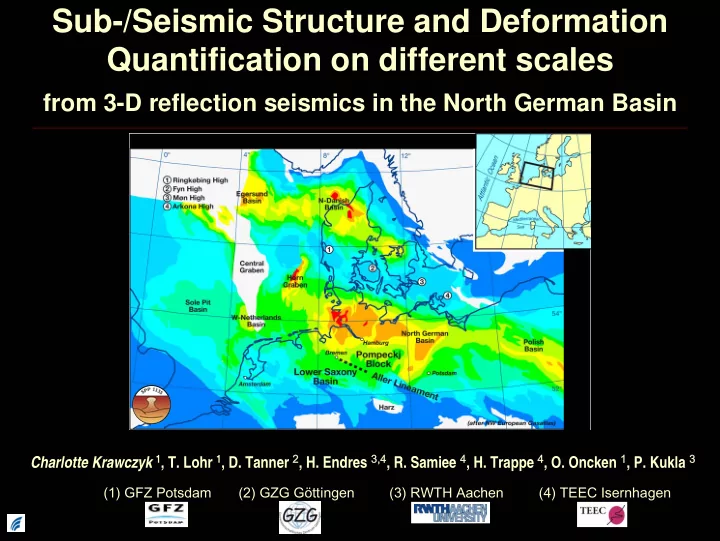

Sub-/Seismic Structure and Deformation Quantification on different scales from 3-D reflection seismics in the North German Basin Charlotte Krawczyk 1 , T. Lohr 1 , D. Tanner 2 , H. Endres 3,4 , R. Samiee 4 , H. Trappe 4 , O. Oncken 1 , P. Kukla 3 (1) GFZ Potsdam (2) GZG Göttingen (3) RWTH Aachen (4) TEEC Isernhagen
Basin evolution depends on (a) magnitude of deformation, (b) strain accumulation in space and time, (c) processes controlling (a) and (b) under varying kinematic constraints. study seismic and sub-seismic sub-seismic scale 12 x 5 cm deformation in 3-D seismic scale quantify distribution, magnitude 0.5 x 0.2 km and accumulation of strain over variety of scales
Workflow ‘ sub-/seismic deformation analysis ’ (1) Seismic interpretation (1) structural architecture and tectonic evolution (2) Kinematic 3-D retro-deformation (2) quantify strain magnitude and distribution (3) Geostatistic tools (3) quantitative fracture prediction (4) Analogue deformation experiments (4) evolution of strain over time (5) Validation of results (5) predict hydrocarbon pathways and storage
Strain distribution and quantification Seismic data, processing results and modelling examples cannot be shown here for confidentially reasons of industry data. Results to date are: - hanging-wall deformation is strongly controlled by 3-D fault morphology - areas of high and low deformation are imaged - deformation affects area up to 1.3 km away from fault - e1 magnitude: 15% after 100 m displacement, 25-30% after 200 m displacement - location of strain concentration does not change - deformation evolves from localized zones to areas of more distributed strain
Recommend
More recommend